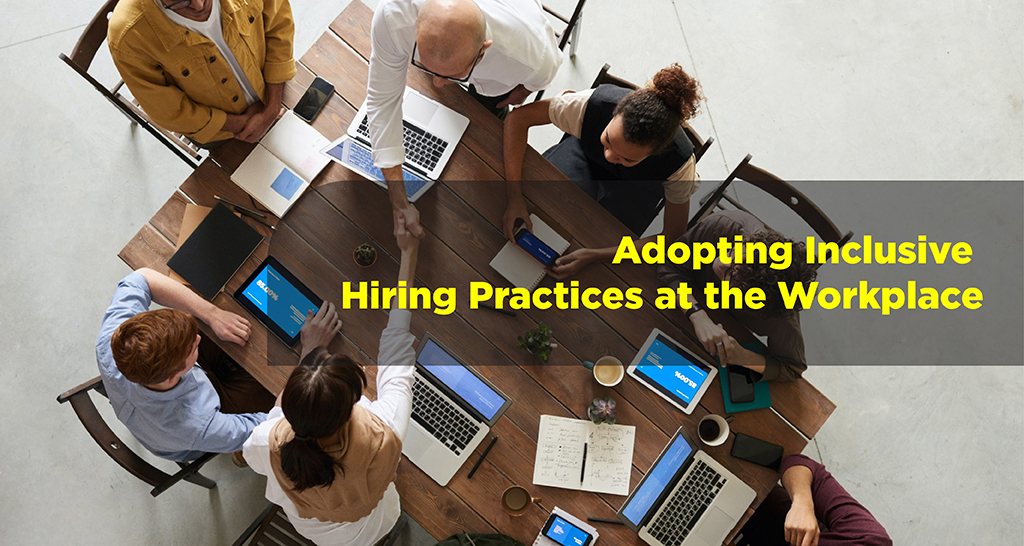In recent years, there has been an increasing focus on creating inclusive hiring practices that welcome employees with disabilities into the workforce. Despite this, many organizations struggle to design and implement effective strategies for recruiting and retaining individuals with disabilities. This is concerning given that people with disabilities are often overlooked in the hiring process, resulting in an underutilized talent pool.
In this article, we will explore some best practices for creating an inclusive hiring process that can help your organization attract and retain talented individuals.
How to Make Your Hiring Practices More Inclusive and Accessible
1. Be Willing to Understand About Disability
When you think about disability, what’s the first thing that comes to mind? Is it a wheelchair? Well, disabilities don’t just limit physical limitations. It goes beyond that, and sometimes you may be able to successfully assume what kind of disability or impairment a person has that may require some assistance that goes beyond wheelchairs.
As an HR or the professional responsible for your company’s hiring process, you need to be willing to understand the broad aspect of disabilities and impairments. Your candidates’ requirements will differ based on their limitations, so the more you keep yourself informed, the more adjustments can be made for an excellent candidate experience.
2. Make the Online Process Accessible to Everyone
Whether you have taken the help of a third-party platform for recruiting or are performing the recruitment process on your own, it’s essential to make the online hiring platform and process accessible to everyone who comes on the page for inclusive hiring. Some job sites are harder to navigate for someone with visual or hearing impairments. This prevents a huge mass of people from applying to your organization.
To make sure your job site is accessible to everyone, here are some things to keep in mind when following inclusive recruitment practices:
- Add alt texts to images and other graphic representation
- Don’t add any important information in a graphical representation
- Enable the ability to enlarge or minimize the text on the website
- Have a high contrast on the website font and background
- Add captions and audio descriptions for videos
- Use a accessibility checker for pdfs and documents to ensure all your documents are accessible
3. Remove Inaccessible Documents
Inclusive hiring is more than just saying your company recruits the differently-abled. It’s more about actually practicing what you preach. To get started, you first need to remove any restrictions or barriers in your way of inclusive recruiting that could prevent individuals with disabilities from applying for the job position.
The first thing to consider is to have all your hiring documents pass the ADA compliance for PDF documents. These documents include job applications and descriptions. They need to pass the ADA compliance, and if they don’t, individuals who use assistive technologies can have a hard time accessing them.
4. Include People with Disabilities in Your Recruiting Team
Someone who has gone through the same process can accurately represent your workforce’s culture. An individual with disabilities can be better spokespersons of their experience working as one in the organization. Plus, they have completed the interview process with you, so they can tell what they wanted in the interview and how the process could’ve been better for them. This can result in true inclusive hiring.
5. Focus on the Abilities in the Interview
Don’t concentrate on what’s not there. Instead, focus on what the candidate can provide your company with. An interview with someone with disabilities should be the same as anyone else. See how the candidate can help the company grow, what their perspectives are, whether they align with your goals, and how you can work with the candidate to achieve them. These positives are something to be kept in mind when interviewing a candidate with disabilities.
Bottom Line
In conclusion, creating inclusive hiring practices for employees with disabilities is not only the right thing to do, but it also benefits the entire organization. By removing the most fundamental barriers during the hiring process, such as maintaining an accessible website while applying, and ensuring accessible documents for your business, companies can attract a more diverse pool of talented candidates. This approach also fosters an environment of respect and inclusivity that can improve employee morale and productivity.
It is important for employers to recognize their responsibility to ensure equal opportunities for all potential candidates, including those with disabilities. By taking proactive steps towards inclusivity, organizations can create a stronger workforce that reflects the diversity of society as a whole.
Author Bio:
Emilie Brown works with the Digital Marketing team at PREP, an AI-based remediation software that enables businesses to create WCAG and ADA-compliant PDFs in minutes. Her approach and methodology are simple, concise, and to the point and connect with readers seeking solution-driven content on topics related to accessibility and remediation. Apart from her time at work, she loves to spend time with her dog, volunteer and play her guitar.

